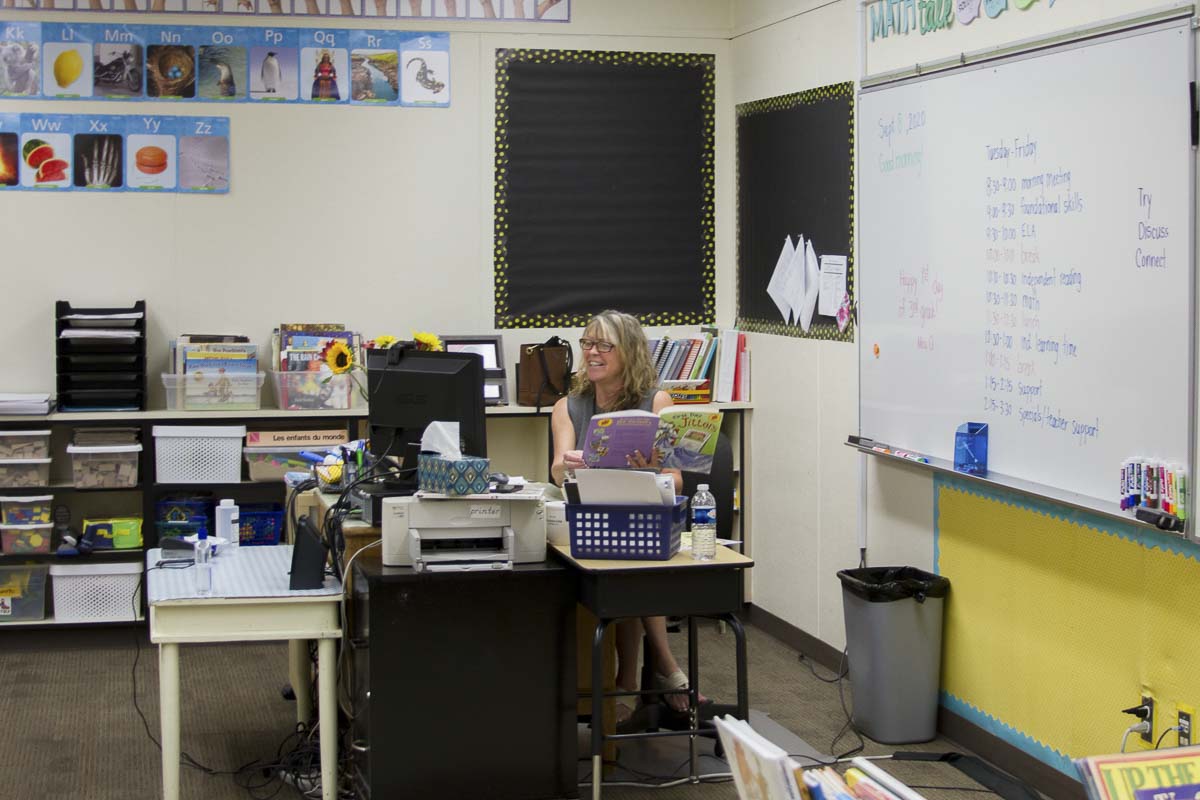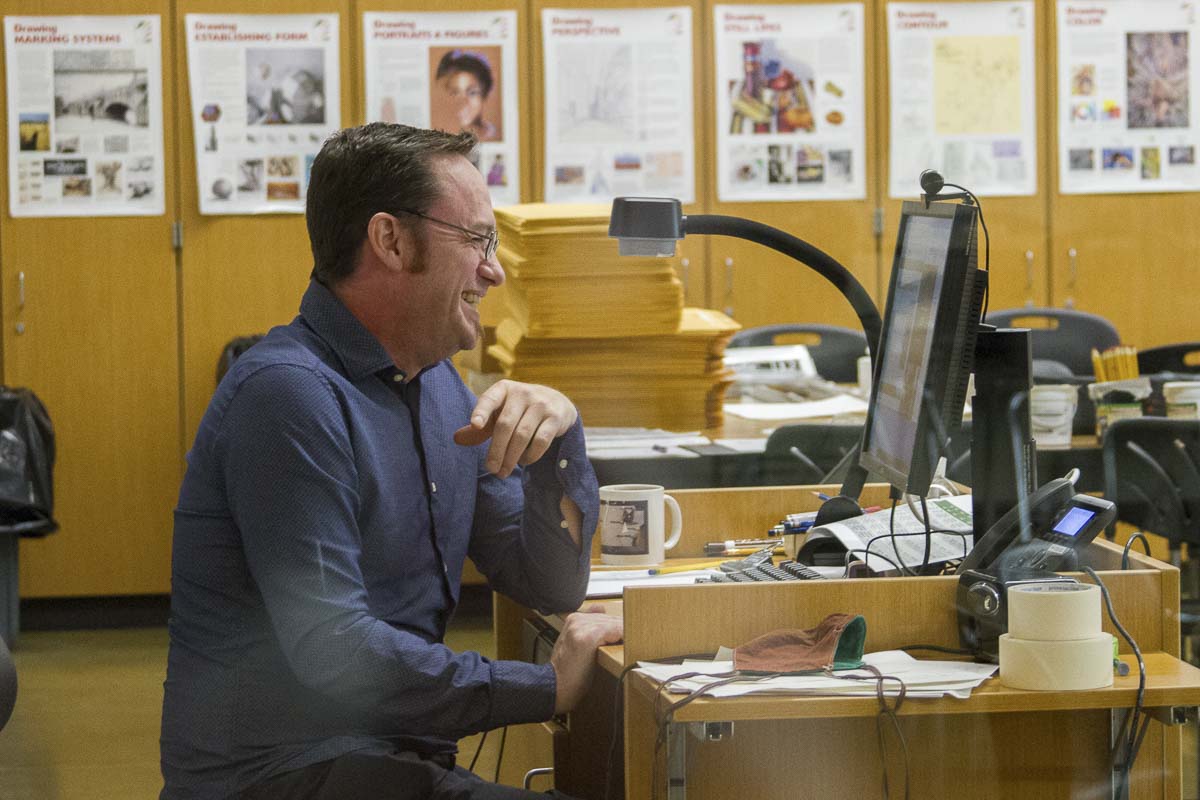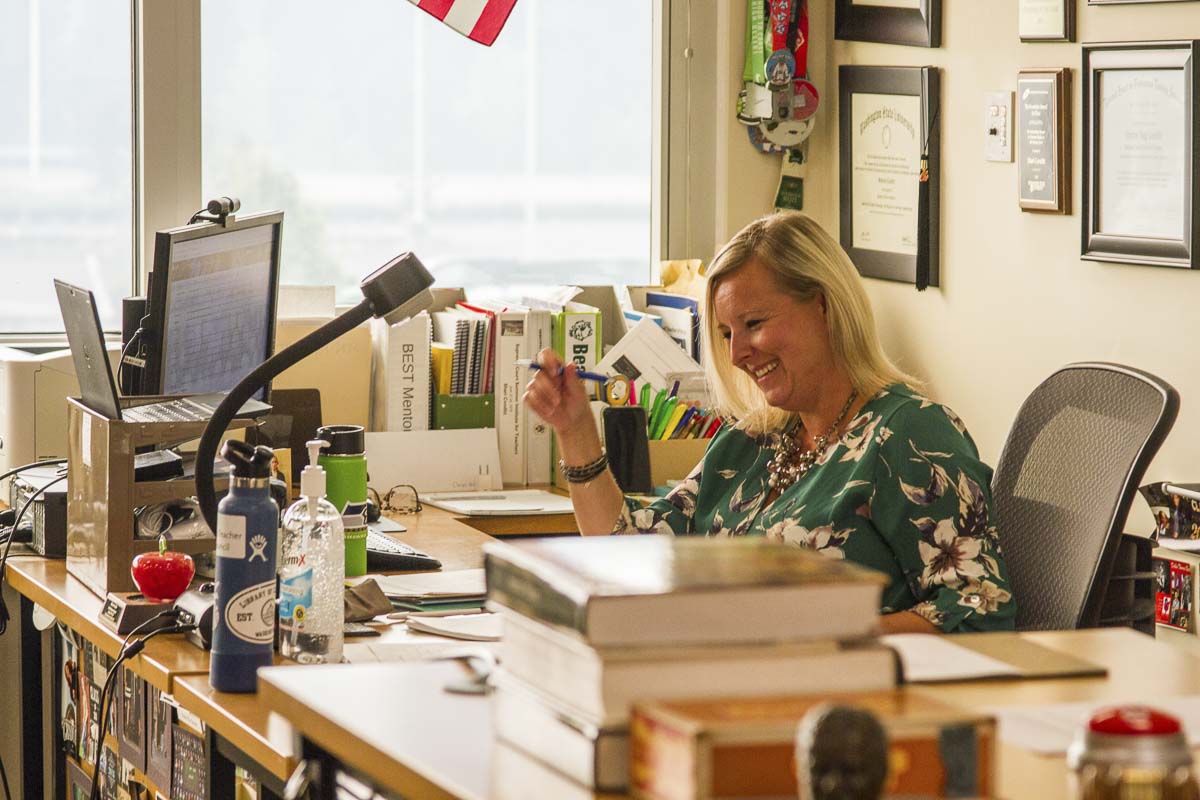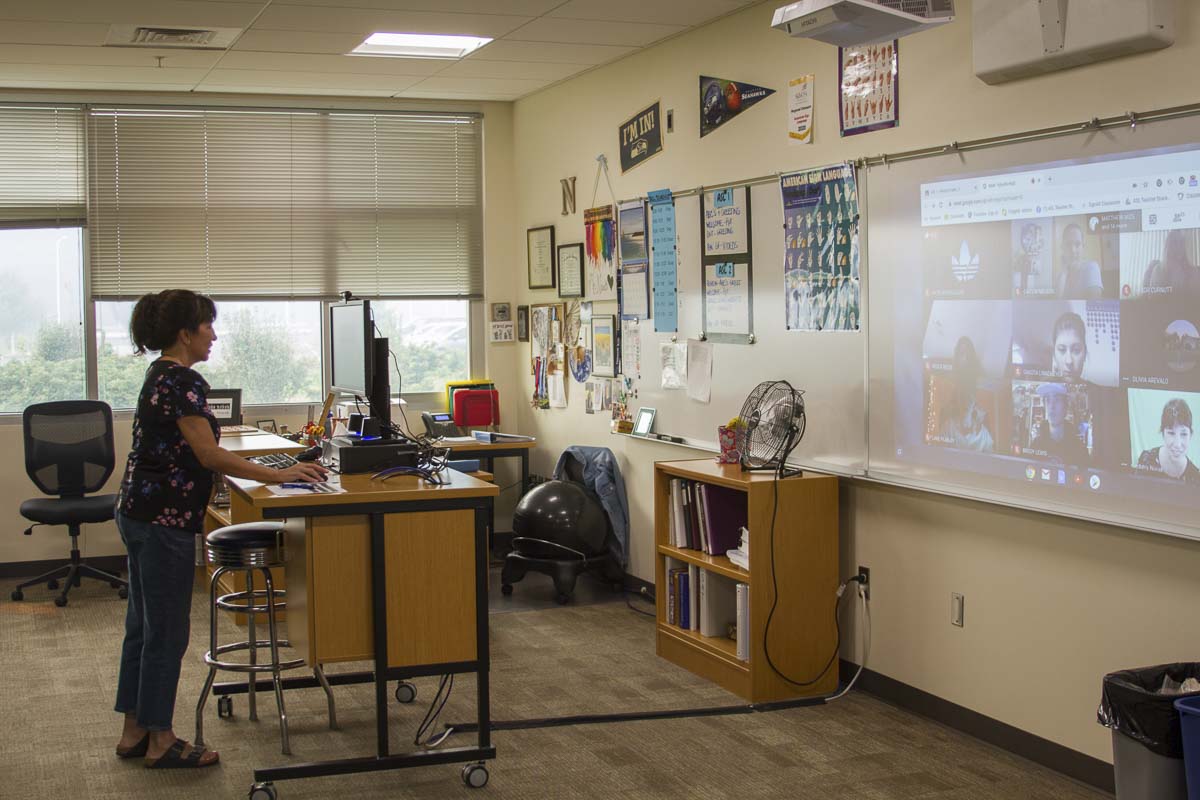Unlike the past spring, Woodland’s teachers hold live classes on a daily schedule this fall with student attendance being mandatory
The staff of Woodland Public Schools kicked off the start of the school year last week with Distance Learning 2.0 – new strategies, techniques, and teaching styles to ensure the community’s students will receive a distance learning experience that more closely resembles in-person learning than this past spring.

Unlike the past spring, Woodland’s teachers hold live classes on a daily schedule this fall with student attendance being mandatory unless a student’s family arranges for asynchronous learning using recorded video lessons. Students receive assignments and earn grades just like in traditional in-person school, with teachers offering additional time for students who need one-on-one or small group assistance with lessons.
Preparing for the new school year meant that, for three weeks before the first day, Woodland’s staff took part in professional development focusing on a variety of vital skills and techniques. Staff spent time learning and practicing a variety of features offered by Google Classroom, a cloud-based software platform which allows teachers to stream live classes, record classes for students who cannot attend live to view later, and both assign and grade projects and other assignments. Teachers also learned how to manage online classrooms, how to encourage social emotional learning remotely, and how to tend to students’ mental health during ongoing remote learning.

On the first day of school, administrators throughout the district were incredibly proud of their staff members’ implementation of the new techniques. “It was amazing to watch my teachers and paraeducators jump right in to teach students live the first day,” said James Johnston, principal of Woodland Middle School. “The staff adapted quickly and maintained flexibility with obstacles as we all knew the first few days could be rocky.”
Dan Uhlenkott, assistant principal for Woodland High School, visited his teachers’ classrooms throughout the first day of school and also came away impressed. “All of the teachers are teaching and students are attentive,” he said. “It’s amazing how well the format seems to be working; now that we have the technique, the next step is to make sure real learning is taking place by working closely with our kids to make sure they receive the help they need.”
Families can see the differences and improvements made to remote learning over the summer. “The overwhelming attitude from parents has been positive at conferences with many expressing how pleased they have been with the approach,” said Johnston. “After the intake process, we even had a few parents relate that they liked the online intake better than our traditional in-person ‘Lunch and Lockers’ event.”
Developing and Introducing Distance Learning 2.0
Preparing for live teaching meant beta testing approaches over the summer including inviting student volunteers to act as guinea pigs for live classes. “We found out that I would need two monitors in order to interact with my students since I wouldn’t be able to see their faces while presenting,” said Shari Conditt, a government teacher at Woodland High School who used student volunteers to test techniques over the summer. “I also discovered I couldn’t use my usual ‘go-tos’ like having students discuss lesson concepts with their neighbor during class or encouraging them to jump into the discussion to share their perspectives.”

In order to accommodate discussion among students, teachers use breakout rooms, a feature of Google Classroom, where students can assemble as small groups in virtual rooms, discuss topics, and then return to the bigger classroom to discuss as a class. In addition, teachers use built-in chat functions and collaborative documents where multiple students can work on the same document in real-time to discuss lessons, ask questions, and work in groups.
Even then, teachers discovered they need to adapt additional in-class techniques to distance learning. “Typically, I avoid ‘cold calling’ random students, instead letting them jump into the conversation during class,” explained Conditt. “However, after my test class, the students who participated told me that I would absolutely have to call on individual students since ‘jumping in’ during a Google Classroom session means talking over the teacher or another student; the test classes provided incredibly valuable feedback and guidance.”
Since teachers can’t easily read a student’s face to know whether or not he or she might be struggling as a single tiny window of more than 20 during a video call, teachers meet with small groups of students and individuals during dedicated time scheduled specifically for offering additional help. This approach ensures students who need a little extra guidance in understanding concepts have the time to receive it.

Teachers have noticed distance learning carries the added benefit of teaching students to develop new skills, as well. “Where students would rarely email me during a normal school year, my students are already learning they need to email me on a regular basis to stay on top of their studies, with some of them emailing almost daily,” said Conditt. “This kind of communication is instrumental in today’s workforce, and students didn’t typically learn these skills at this level until they attended college.”
Conditt modeled her distance learning on Stanford University’s remote high school project where students do the reading to learn the concepts in advance of the live sessions which feature minimal lecture time to encourage more engagement and deeper learning. “Students need to have a reason to show up to the live class, and since lectures can be watched any time, live class sessions focus more on interaction with me and their classmates through class discussions and presentations,” she said.
Conditt feels a great deal of pride for her colleagues during this time. “As a staff, we have shown that we must practice what we preach – just like we teach our students, you need to be able to adapt to new situations and change efficiently, effectively, and quickly to ensure student learning takes place in any environment,” she explained. “Our teachers and staff have become incredibly adept at developing and implementing learning systems and I’m so proud of them.”
Woodland Public Schools offers full-time distance learning programs for families who prefer alternatives to the eventual return to in-person school
Some families opted to enroll their students in Woodland’s alternative learning programs which have offered distance learning options for years. These programs will remain distance learning even when the rest of the district returns to in-person school.

For students in grades K-8, Lewis River Academy (LRA) offers a program where parents serve as the primary learning coach for their children with support from dedicated teachers in the form of personalized learning plans and lessons. Once in grades 9-12, TEAM High School offers students an alternative to the traditional high school experience where students earn a high school diploma while learning at their own pace to accommodate responsibilities that may prevent attending a traditional school day such as outside employment, helping out taking care of family, or other life challenges.
Enrollment for both programs increased dramatically over the summer. “LRA’s enrollment tripled and TEAM High School’s doubled, but that increase in enrollment did not slow down or stop our amazing teachers and staff,” said Jake Hall, executive director of Learning Supports and Alternatives for Woodland Public Schools. “A tremendous amount of work went into preparing for school this fall, and I am truly inspired by the dedication and effective work of our staff – we are blessed to welcome new families who are leaning in to make alternative learning successful for our students and look forward to making 2020-21 awesome!”
Learn more about how Woodland Public Schools educates students and serves the community, by visiting the dedicated news webpage at https://www.woodlandschools.org/news/wsd
Stay informed with the latest updates about the eventual transition from remote learning to in-person learning and more about COVID-19 at Woodland Public Schools’ dedicated website: www.woodlandschools.org/covid-hq
Information provided by Woodland Public Schools.




